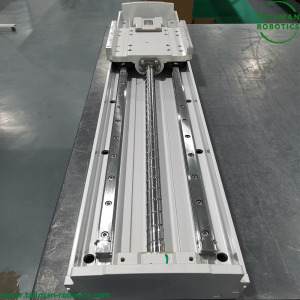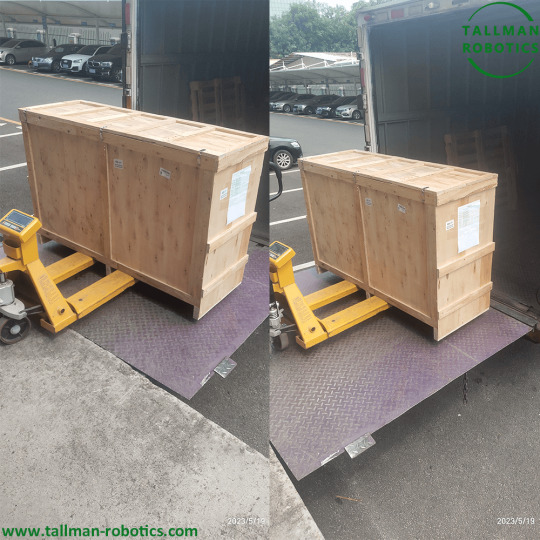#LinearMotionModules
Explore tagged Tumblr posts
Text
Screw Linear Motion Modules Will Be Delivered To USA

Screw Linear motion modules are mechanical systems designed to provide controlled linear movement in various applications. They are commonly used in industrial automation, robotics, and other fields where precise linear motion is required.

If you're experiencing issues or challenges with linear motion modules, it's important to identify the specific problems you're facing in order to determine the appropriate solutions. Here are a few common issues and some possible suggestions to overcome them: 1. Lack of precision: If your linear motion module is not providing the desired accuracy or precision, you may need to check if the mechanical components are properly aligned and lubricated. Additionally, consider the quality and condition of the module itself, as well as the control system used to drive it. 2. Mechanical failures: Linear motion modules consist of various mechanical components such as rails, bearings, screws, and belts. If you're experiencing frequent failures, it could be due to worn-out or damaged components. Regular maintenance and inspection can help identify and replace any faulty parts. 3. Insufficient load capacity: If you're trying to move loads that exceed the specified capacity of the linear motion module, it can lead to performance issues or even damage. Make sure you're using a module that is suitable for the intended load and consider upgrading to a higher capacity module if necessary. 4. Compatibility issues: Linear motion modules often need to be integrated into larger systems or work alongside other components. Compatibility issues can arise if the module is not properly matched with other parts of the system. Double-check the specifications and requirements of all components involved to ensure they are compatible. 5. Control and programming challenges: If you're struggling with controlling the linear motion module or programming it to perform specific tasks, it may be helpful to consult the documentation or seek support from the manufacturer. They can provide guidance on the programming interface, control signals, and troubleshooting techniques. Remember, linear motion modules are complex systems, and resolving issues might require a combination of mechanical, electrical, and software-related solutions. If you're still having difficulties, it may be beneficial to consult with experts or professionals in the field who have experience with linear motion modules. You are welcome to https://www.youtube.com/@tallmanrobotics to watch our video centre for more projects or visit our website to check other series or load down e-catalogues for further technical data. Read the full article
#AcmeScrewsandLinearActuators#BallScrewandLinearMotionComponent#Ballscrewlinearmodule#LeadScrewDrivenLinearStagesModule#LeadScrews#LinearmodulesSmallModulesScrewDriven#LinearMotionGuideActuators#LinearMotionModule#PrecisionSlidingTableBallScrew#Screwdrivenmodules#ScrewLinearModules#StainlessSteelLinearModuleHighSpeedBallScrewRail
0 notes
Text
Industrial Linear Motion Modules Are Picked Up to Germany

Industrial Linear Motion Modules Are Picked up to Germany.



Industrial Linear Motion Modules are mechanical systems designed to provide linear motion to various industrial applications. They consist of a combination of linear guides, actuators, and other components that enable precise and controlled movement of a load along a straight line. These modules are widely used in various industries such as manufacturing, automation, robotics, and material handling. Some common types of industrial linear motion modules include: - Linear Guides: These are mechanical components that provide support and guidance to the moving parts of a linear motion system. Linear guides typically consist of a rail and a carriage, with the rail providing a smooth surface for the carriage to slide along. - Linear Actuators: These are electromechanical devices that convert rotational motion from a motor into linear motion. Linear actuators can be divided into several types, such as screw-driven, belt-driven, and direct-drive actuators. - Ball Screws: A ball screw is a type of mechanical actuator that translates rotational motion into linear motion. It consists of a screw shaft and a ball nut, with ball bearings positioned between them to reduce friction and increase efficiency. - Linear Motors: These are direct-drive motors that generate linear motion without the need for any mechanical transmission components like gears or belts. They use magnetic fields to produce force, which moves the load along a linear path. - Linear Bearings: These are mechanical components that provide low-friction movement for linear motion systems. Linear bearings can be divided into several types, such as ball bearings, roller bearings, and plain bearings. - Linear Slides: These are pre-assembled systems that combine linear guides, actuators, and other components to provide a ready-to-use linear motion solution. Linear slides can be customized to meet specific application requirements. When selecting an industrial linear motion module, it is essential to consider factors such as load capacity, speed, accuracy, repeatability, and environmental conditions to ensure the chosen system meets the requirements of the specific application. You are welcome to https://www.youtube.com/@tallmanrobotics to watch our video centre for more projects or visit our website to check other series or load down e-catalogues for further technical data. Read the full article
#HighSpeedLinearModules#linearmodulesforprecisionmotionandindustrialautomationapplications#LinearMotionModules#LinearMotionProducts#LinearMotionSystems#MotorizedLinearStage
0 notes